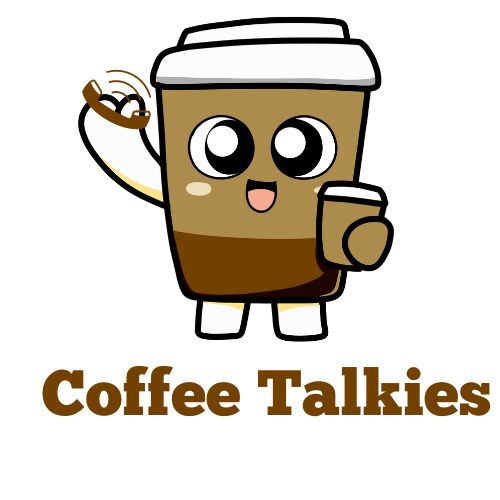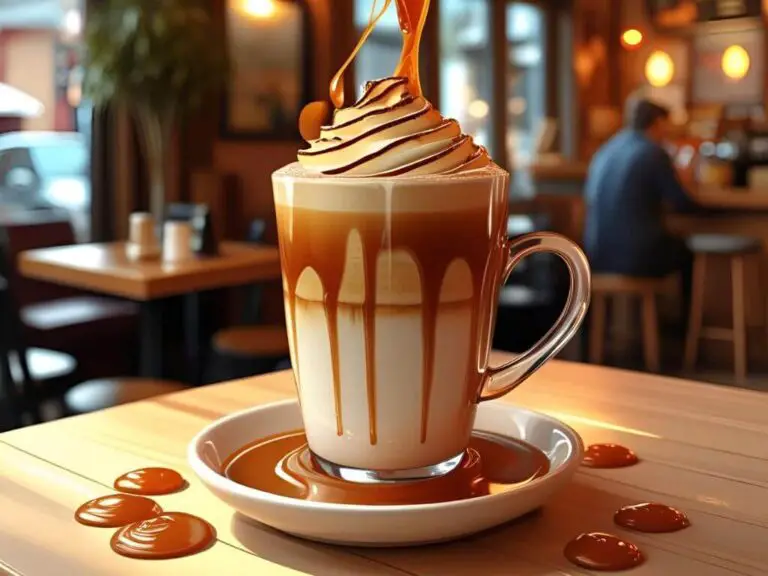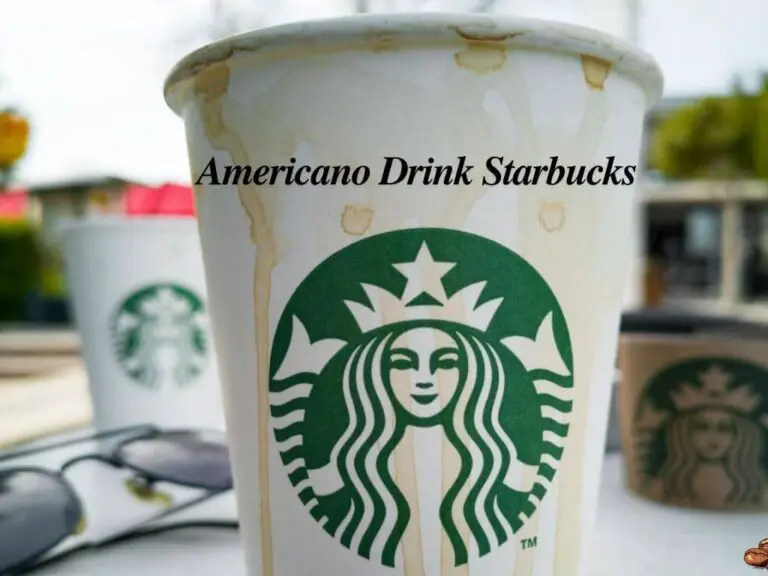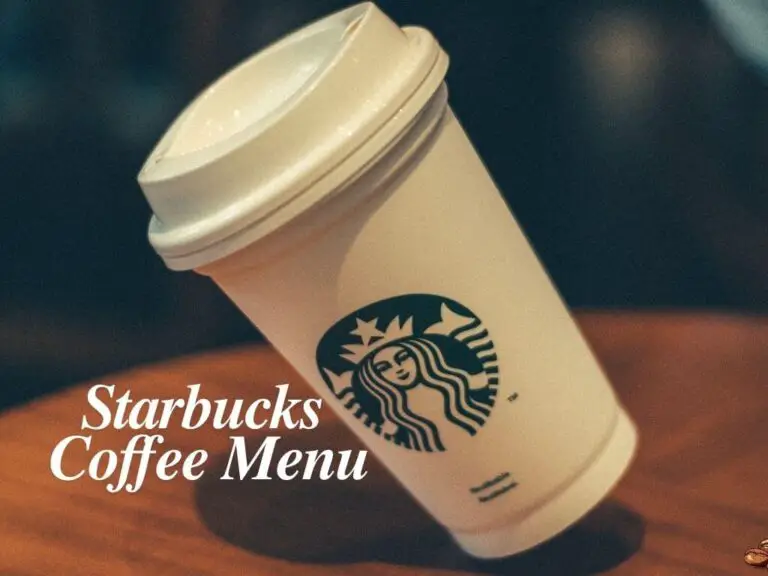Starbucks Coffee Prices: A Complete Breakdown
Starbucks has become a household name around the world, known not just for its coffee but for the experience it offers. Whether you’re grabbing a quick cup on your way to work or settling into one of their cozy shops for a few hours, Starbucks coffee is more than just a drink – it’s a lifestyle. But if you’re a regular, you’ve probably noticed that Starbucks coffee prices can vary significantly depending on a few factors.
From the size of the drink to your location and even the customizations you add, the price of your favorite Starbucks order isn’t always straightforward. In this article, we’ll break down the key elements that influence Starbucks coffee prices, compare their menu items with other coffee chains, and offer some helpful tips on how to save a few bucks on your next order.
Let’s dive into what exactly makes those Starbucks coffee prices tick and whether that extra dollar or two is worth it for your morning cup of Joe!
Factors Affecting Starbucks Coffee Prices
Several factors come into play when determining the price of a Starbucks drink. Understanding these elements can help you better navigate the menu and perhaps even adjust your order to save money.
Size of the Drink
Starbucks offers multiple drink sizes, each affecting the overall price. The sizes range from Tall (12 oz), to Grande (16 oz), Venti (20 oz for hot, 24 oz for cold), and the lesser-known Trenta (31 oz, available for certain cold drinks). Naturally, the larger the size, the higher the price tag. While a Tall might be more affordable, upgrading to a Venti could cost you significantly more.
Location and Regional Variations
One interesting aspect of Starbucks pricing is how much it can fluctuate depending on where you’re located. In major cities, prices are typically higher than in smaller towns due to higher operating costs like rent and wages. Additionally, Starbucks prices vary across countries. What might be a reasonably priced latte in the U.S. could cost significantly more in countries like Switzerland or Japan. It’s not uncommon to pay a premium for your favorite drink if you’re traveling internationally.
Customizations and Add-Ons
Love your drink with almond milk or an extra shot of espresso? Starbucks is known for its customizable drinks, but all those little extras add up. Whether it’s opting for non-dairy milk, adding flavored syrups, or topping off your drink with whipped cream, each of these modifications usually comes with an extra charge. It’s easy to turn a basic coffee into a pricier beverage with a few customizations.
Seasonal and Limited Editions
One thing Starbucks fans look forward to is the release of seasonal drinks, like the famous Pumpkin Spice Latte or Peppermint Mocha during the holidays. These specialty drinks often come with their own pricing structure, which is usually higher than regular menu items. Limited-edition drinks tend to reflect the higher cost of unique ingredients and the added allure of being available only for a short time.
These key factors influence what you pay at Starbucks, but they’re not the only things to consider. Let’s move on to explore the price breakdown of some popular drinks you may already know and love.

Breakdown of Popular Starbucks Drinks and Their Prices
Starbucks has a wide variety of drinks on its menu, each with its own price point depending on the ingredients, preparation time, and size. Let’s take a closer look at some of the most popular categories of Starbucks beverages and how they stack up in terms of cost.
Classic Coffee Beverages
For those who prefer a simpler cup of coffee, Starbucks offers a range of classic drinks like brewed coffee, iced coffee, and espresso-based options. A Tall brewed coffee might be one of the most affordable choices on the menu, usually starting around $2-$3. If you’re in the mood for an espresso or americano, these tend to be similarly priced but can increase with customizations like an extra shot of espresso or adding milk.
Iced coffee is also a popular choice, especially in warmer months. However, you may notice that iced versions of classic drinks can sometimes be a bit more expensive than their hot counterparts due to the preparation and materials involved, like the plastic cups and ice.
Specialty Drinks
Starbucks is known for its indulgent, handcrafted beverages, which usually come with a higher price tag. Favorites like lattes, Frappuccinos, and macchiatos start around $4 for a Tall and can easily climb up to $6 or more for larger sizes and customizations. These drinks involve more ingredients, such as milk, syrups, and whipped cream, which naturally increases the cost. For instance, a Caramel Macchiato, a Starbucks staple, is a layered espresso drink with caramel drizzle and milk, making it a bit pricier than a basic coffee.
Frappuccinos, which are blended iced drinks, often come with the highest price points due to the complexity of their preparation and the variety of flavors available. A Venti Frappuccino, for example, can cost upwards of $6-$7 depending on the flavor and any extras you add.
Seasonal Beverages
Specialty drinks get even more expensive when it comes to Starbucks’ seasonal offerings. Popular items like the Pumpkin Spice Latte or the Peppermint Mocha often cost more due to their limited availability and the unique ingredients involved. Seasonal drinks are priced slightly higher, with a Tall Pumpkin Spice Latte starting around $5.50 in most locations. These prices can increase with size or extra toppings like whipped cream or additional flavors.
Cold Brews and Nitro Cold Brews
In recent years, Starbucks has also introduced premium cold drinks like Cold Brew and Nitro Cold Brew. These beverages typically command a higher price due to their longer brewing process and the premium quality of the coffee used. A Tall Cold Brew might start around $4, while the Nitro version, which is infused with nitrogen for a smoother texture, can be closer to $5 or more. Nitro Cold Brew is served without ice, but the rich texture and flavor make it a popular choice for coffee aficionados willing to pay extra.
Understanding these price ranges can help you decide which drink fits both your taste preferences and budget. Now, let’s take a global perspective and see how Starbucks coffee prices vary around the world.

Starbucks Menu Pricing Around the World
Starbucks is a global brand, and while the menu might be consistent across countries, the prices definitely are not. If you’re a frequent traveler or just curious about how Starbucks coffee prices compare internationally, there are a few key factors to keep in mind.
U.S. vs. International Markets
In the United States, the average price for a Tall brewed coffee is around $2.75, but this can vary by city. For instance, a Starbucks coffee in New York City or San Francisco can be significantly more expensive than in smaller towns or rural areas due to the higher costs of rent and wages in big cities.
When you compare U.S. prices to international markets, you’ll notice some stark differences. In Europe, especially in countries like Switzerland or Norway, Starbucks drinks can be quite pricey, with a basic coffee costing upwards of $5 or more. In contrast, countries like Thailand or Mexico may offer Starbucks coffee at more affordable prices, relatively speaking, though they might still be considered expensive by local standards.
Currency Exchange Influence
Currency exchange rates also play a huge role in Starbucks pricing. In countries with weaker currencies compared to the U.S. dollar, Starbucks prices can seem disproportionately high. For instance, in Brazil or Argentina, the cost of a Starbucks latte might be several times more expensive when adjusted for the local average income. Conversely, in countries with stronger currencies, such as Japan or Switzerland, Starbucks prices may not fluctuate as much when converted to U.S. dollars, but still, they remain on the higher end.
Taxes and Local Regulations
Local taxes and regulations also influence Starbucks coffee prices globally. For example, in some European countries, a value-added tax (VAT) is applied to goods and services, including coffee, which significantly raises the price. Meanwhile, in places like Canada, both federal and provincial sales taxes are added to the final bill. Some countries also have specific regulations around food service businesses that may affect prices, such as requirements for fair-trade sourcing, sustainability practices, or minimum wage laws.
It’s fascinating to see how prices shift based on geography, and this variation is an important aspect of Starbucks’ global pricing strategy. Let’s dive deeper into the thought process behind how Starbucks sets its prices worldwide.
Coffee:
- Tall (16 oz): $2.95 – $3.50
- Grande (20 oz): $3.65 – $4.25
- Venti (24 oz): $4.15 – $4.75
Espresso-Based Drinks:
- Latte: $3.75 – $4.45
- Cappuccino: $3.75 – $4.45
- Americano: $2.95 – $3.50
- Macchiato: $3.25 – $3.75
Frappuccinos:
- Tall (16 oz): $4.25 – $4.95
- Grande (20 oz): $4.75 – $5.50
- Venti (24 oz): $5.25 – $6.00
Teas:
- Tall (16 oz): $2.75 – $3.25
- Grande (20 oz): $3.25 – $3.75
- Venti (24 oz): $3.75 – $4.25
Please note that these prices may vary depending on your location and specific drink choices.

Starbucks Pricing Strategy
Starbucks’ pricing isn’t arbitrary—it reflects a well-thought-out strategy aimed at balancing quality, sustainability, and maintaining the brand’s premium image. Here’s a closer look at some of the elements behind Starbucks’ pricing.
Perceived Value and Brand Premium
Starbucks positions itself as a premium coffee brand, and this is reflected in its prices. People are willing to pay more for the Starbucks experience, which includes not just the drink itself but the comfortable atmosphere, free Wi-Fi, and the feeling of being part of a global community. This “brand premium” allows Starbucks to charge higher prices than many of its competitors. The brand’s consistency in quality and service across all locations reinforces this perceived value, making customers feel that they’re getting more than just a cup of coffee.
Inflation and Cost of Raw Materials
Like all businesses, Starbucks is affected by the rising cost of raw materials. Coffee beans, milk, sugar, and other ingredients have all seen price increases due to global inflation, supply chain issues, and climate change. For example, a bad coffee crop season in Brazil or Ethiopia can drive up the cost of beans worldwide, and Starbucks adjusts its prices accordingly to cover these additional expenses. Similarly, the cost of milk and non-dairy alternatives has risen, impacting the price of popular drinks like lattes and Frappuccinos.
Sustainability Initiatives
Starbucks is committed to a variety of sustainability initiatives, such as ethically sourcing 100% of its coffee beans and reducing its environmental footprint. While these efforts are commendable, they also contribute to higher operational costs, which are reflected in the prices of their drinks. For instance, Starbucks’ focus on using eco-friendly materials, like compostable straws and reusable cups, requires investment, and this is often passed on to the consumer.
Understanding Starbucks’ pricing strategy helps explain why their coffee prices may seem high but also why loyal customers continue to pay the premium. However, that doesn’t mean you can’t save money while still enjoying your favorite Starbucks drinks. Let’s explore some ways to do just that.
Ways to Save on Starbucks Coffee
While Starbucks is known for its premium prices, there are plenty of ways to enjoy your favorite drinks without breaking the bank. Whether you’re a daily visitor or an occasional treat-seeker, these tips can help you get the most out of your Starbucks experience for less.
Starbucks Rewards Program
One of the easiest and most effective ways to save on Starbucks is by joining the Starbucks Rewards program. This free loyalty program allows you to earn stars for every purchase, which you can then redeem for free drinks, food items, and customizations. For example, you can earn 2 stars per dollar spent when paying with a Starbucks card or the app. Once you accumulate enough stars, you can get free refills, a free drink of your choice, or even a complimentary birthday treat.
If you’re a regular Starbucks customer, the rewards program can quickly add up and help offset the cost of pricier drinks like lattes and Frappuccinos. Plus, the Starbucks app often features exclusive promotions, giving you the chance to earn bonus stars or take advantage of discounts on select items.
Discounts and Promotions
Starbucks frequently offers seasonal promotions and limited-time discounts, so it pays to keep an eye out. These can range from happy hour deals where you can get buy-one-get-one-free drinks to discounts on select beverages during specific hours. Checking the Starbucks app regularly can help you stay in the loop on these deals.
Another trick is to ask if your local Starbucks honors student, military, or senior discounts—many locations do, though it’s not always advertised. Additionally, bringing in your own reusable cup can earn you a small discount on your drink, which not only saves you money but is also an eco-friendly move!
Customization Tips for Lower Prices
Customizing your drink is one of the best parts of ordering at Starbucks, but it can also make your drink more expensive. However, with a few smart swaps, you can create a delicious drink for less. For example, if you love lattes but want to save, consider ordering an Americano with a splash of milk instead. It has the same espresso base as a latte but costs less.
Another hack is to order your drink in a larger size but with no ice, which gives you more actual coffee or tea for your money. If you’re a fan of cold drinks, ordering a “short” size (which isn’t always listed on the menu) can save you a bit without sacrificing quality. These small modifications can add up to noticeable savings over time.
Starbucks Rewards Credit Card
For true Starbucks enthusiasts, the Starbucks Rewards Visa Card could be worth considering. With this credit card, you can earn Starbucks stars on every purchase, even outside Starbucks, which means you can build up rewards faster. The card often comes with a sign-up bonus, such as enough stars for several free drinks, and no annual fee for the first year.
By using the rewards program wisely and keeping an eye out for discounts and hacks, Starbucks fans can still enjoy their favorite drinks without feeling guilty about the price tag. But how does Starbucks pricing stack up against other coffee chains? Let’s take a look.
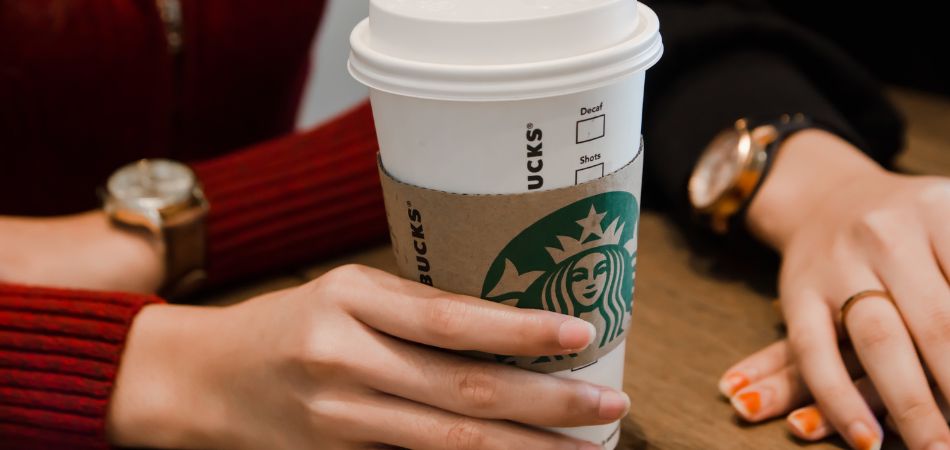
Price Comparisons: Starbucks vs. Other Coffee Chains
To truly understand if Starbucks’ pricing is justified, it’s important to compare it with other coffee chains. Is the premium price worth it, or are there more affordable alternatives?
Comparison with Local Coffee Shops
In most cities, you’ll find plenty of independent coffee shops, often offering similar drinks for lower prices. While a basic brewed coffee at Starbucks might cost around $2.75, a local café may charge closer to $2 for a comparable cup. Specialty drinks, like lattes or cappuccinos, can also be less expensive at independent shops, where prices might hover around $4 compared to Starbucks’ $5 or more.
However, many Starbucks fans argue that the chain’s consistency, quality, and ambiance make it worth the higher price. At Starbucks, you know exactly what you’re going to get, no matter where you are in the world. Independent coffee shops might offer more unique experiences, but they may not always match the quality and consistency that Starbucks guarantees.
Comparison with Competitors (e.g., Dunkin’, McCafé)
Two of Starbucks’ biggest competitors are Dunkin’ and McCafé (McDonald’s coffee brand), both of which offer lower prices. At Dunkin’, a Tall (small) coffee might only cost around $2, while a latte could be priced around $3. McCafé also tends to be significantly cheaper, with many locations offering coffee for $1 to $2, and espresso drinks for around $2 to $3.
The lower prices at these chains make them attractive alternatives for budget-conscious coffee lovers. However, Starbucks offers a broader selection of high-quality coffee beans and customizable options, which often justifies the price difference for many customers.
Comparing prices across these chains highlights that while Starbucks may charge more, customers often feel that they’re paying for the overall experience, the wide range of options, and the premium brand.
Conclusion: Is Starbucks Worth the Price?
Starbucks coffee prices may be higher than those of local cafés or competitors like Dunkin’ and McCafé, but for many, the cost is justified by the quality, consistency, and overall experience. From the comfortable atmosphere to the extensive drink customizations, Starbucks offers more than just a cup of coffee—it delivers a premium coffee culture that resonates with millions of loyal customers worldwide.
While it’s easy to spend a little extra at Starbucks, the good news is that there are plenty of ways to save, whether it’s through the Starbucks Rewards Program, seasonal promotions, or customizing your order strategically.
Ultimately, whether Starbucks is worth the price depends on how much you value the brand, the quality of the coffee, and the overall experience. What do you think—are Starbucks prices justified, or do you prefer a more budget-friendly option for your daily caffeine fix? Let us know!
FAQ’s
How much is a coffee on Starbucks?
A standard brewed coffee at Starbucks typically costs around $2.75 for a Tall size, while lattes and other espresso-based drinks generally start at about $4 to $5. Prices can vary based on location, drink size, and any customizations you choose. Seasonal beverages, like the Pumpkin Spice Latte, may also have different pricing.
What is the current price for Starbucks?
The current price for Starbucks varies by location and drink type. On average, a Tall brewed coffee costs around $2.75, while specialty drinks like lattes and Frappuccinos typically range from $4 to $6. Seasonal beverages may have different pricing, and additional customizations can also affect the final cost. For the most accurate prices, it’s best to check the Starbucks app or visit a local store.
What is the cheapest drink at Starbucks?
The cheapest drink at Starbucks is typically a Short Brewed Coffee or Hot Tea, which usually costs around $2.00, depending on the location. If you’re looking for a more customizable option, an Americano can also be a budget-friendly choice, priced slightly higher but still affordable. Keep in mind that prices may vary by location, so it’s always good to check your local menu!
What is the price of the most expensive coffee of Starbucks?
Determining the most expensive Starbucks drink is difficult as prices can vary depending on location, size, and customizations. However, some of the most expensive drinks typically include those with a large number of espresso shots, multiple add-ons like syrups and whipped cream, or specialty drinks created with unique ingredients.
One notable example is the “Super Venti Flat White” ordered by a customer in the UK, which contained a staggering 170 shots of espresso and cost around $149. While this is an extreme case, it highlights the potential for customizing Starbucks drinks to be quite expensive.
